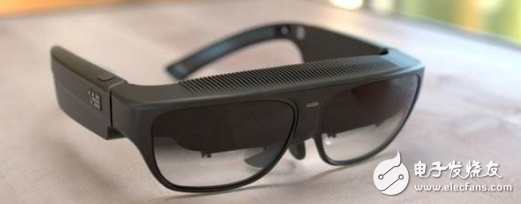In today’s VR technology slump, AR is gaining momentum, and numerous tech companies have already recognized this trend and are investing heavily in it. Apple has long been working on its own AR glasses, believing that AR will not isolate users from the real world as much as VR does. The company sees AR as a potentially disruptive product, much like the smartphone revolutionized daily life.
Recently, a reporter covered the progress of Apple’s AR glasses, including developments in display technology, custom chips, operating system, and app store integration. Apple has also been testing existing VR headsets for related research. Here’s a summary of the latest updates.
After the iPhone, Apple is seeking another breakthrough product. Their goal was to secure AR glasses technology as early as 2019, with a potential launch as soon as 2020.

According to insiders, Apple’s AR glasses will feature an integrated display, powered by a new chip and a dedicated operating system. The company is actively developing various components, with continuous progress being made.
While VR immerses users in a digital world, AR overlays digital information onto the real environment. The potential applications of AR are vast—sports fans can view live scores during a game, and technicians can follow repair instructions through AR. This technology is reshaping how we work and interact with the world.
Apple isn’t the only player in the AR space. Google launched Google Glass in 2012, which initially failed in the consumer market but later found success in enterprise use. Microsoft’s HoloLens is currently the most advanced AR device, though its high price limits it to industrial applications. Startups like Meta are also making strides in the AR field.
Apple CEO Tim Cook believes AR has the potential to be as transformative as the smartphone. He highlighted this during a U.S. news program and even mentioned AR in Apple’s earnings call. Cook has consistently expressed optimism about AR’s future, stating, “We believe AR will change the way we work, entertain, connect, and learn. In short, we think AR will change how we use technology forever.â€
Despite these positive signals, Apple has remained quiet about the exact progress of its AR glasses.
In fact, several years ago, Apple formed a dedicated team focused on AR development. Led by Mike Rockwell, a former engineer at Dolby Laboratories, the team includes hundreds of engineers spread across locations in California. They are currently working on a project codenamed “T288.â€
The team’s first major step was the release of ARKit, an AR development platform introduced at WWDC this year. With iOS 11, Apple updated the App Store to include numerous AR apps, and the number of AR applications has now surpassed 1,000. This marks the beginning of Apple’s broader push into AR.
The next big step is the development of the AR headset itself. Apple aims to create a standalone device capable of displaying 3D content and offering long battery life—tasks that are technically complex. During an interview with the British publication *The Independent*, Cook acknowledged that current AR display technology is still imperfect, and there are significant challenges ahead.
“We are not satisfied with any technology you can see on the market,†said Apple’s Chief Design Officer. “We have some ideas, but we need to develop the necessary technologies to match them.â€
Apple is also working on its own ARM chip, designed to be as compact and efficient as the Apple Watch’s processor. This chip would integrate key components such as graphics processors, AI chips, and CPUs into a small space, reducing power consumption.
For the operating system, Apple internally refers to it as “rOS†(reality operating system), built on top of iOS. Geoff Stahl, a former software manager at Apple’s Games and Graphics division, leads the rOS team.
As for user interaction, Apple hasn’t finalized a solution yet, but they’ve explored options like trackpads, Siri voice commands, and head gestures. Engineers have tested various applications, from drawing and messaging to more advanced features like virtual meetings and 360-degree video playback.
Apple plans to integrate its existing App Store into the AR headset, allowing users to download content just like they do with iPhones, Apple Watches, Apple TVs, and Macs.
Since Apple doesn’t yet have a complete AR headset, engineers have been using devices like the HTC Vive for testing. They’ve also tested iPhone components on other headsets, such as Oculus and Gear VR. However, these are not intended for public sale—they’re used internally to test AR applications.
It’s clear that Apple’s first AR headset will take at least two years to reach the market. Meanwhile, ARKit continues to evolve. In 2018, Apple will release a new version of ARKit featuring persistent tracking, which allows virtual objects to stay in place even when users look away. It will also support multiplayer AR gaming, opening up new possibilities for developers.
50L Agriculture Drone,Agriculture Electric Sprayer Uav,Agriculture Sprayer Fertilizer Drone,Drone Sprayer
Xuzhou Jitian Intelligent Equipment Co. Ltd , https://www.jitianintelligent.com
